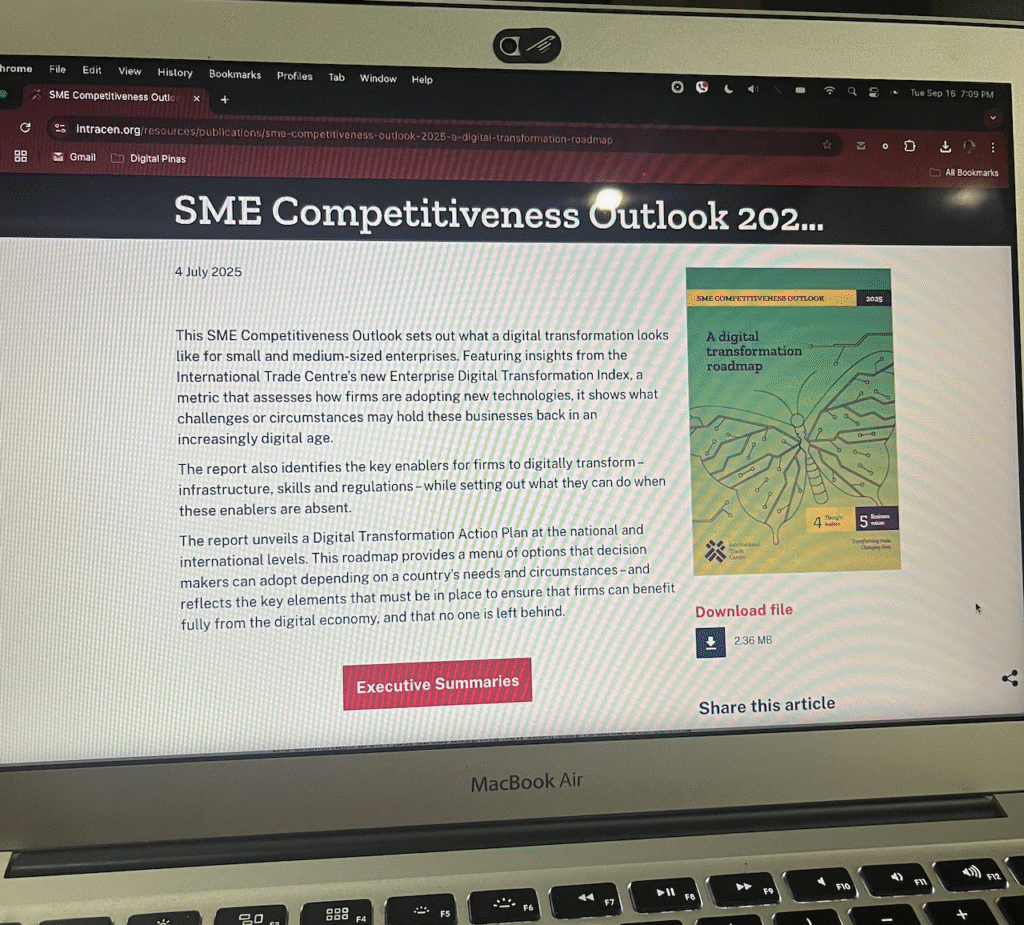I’ve been reflecting on the International Trade Centre’s annual flagship report, the SME Competitiveness Outlook: A digital transformation roadmap, and while the general principles hold true, the realities in the Philippines are unique and often starker than in developed countries. As someone deeply invested in the local business scene, I see that the challenges aren’t just about adopting new tech; they’re about overcoming fundamental, systemic hurdles.
The Reality of Infrastructure Gaps
The report’s mention of “infrastructure gaps” hits different here. It’s not just about slow internet speeds; it’s about the very real problem of unstable internet access and high costs that disproportionately affect SMEs outside major urban centers. In many provinces, reliable internet is a luxury. How can a small business owner in a remote area be expected to run an e-commerce site or manage cloud-based inventory if their connection is spotty or drops every few hours? This isn’t a minor inconvenience; it’s a direct barrier to entry into the digital economy.
Moreover, the cost of high-speed internet is often prohibitive for small businesses with limited capital. Unlike in more developed economies where broadband is a standard utility, here it’s a significant monthly expense. This forces many to rely on mobile data, which is neither a reliable nor a scalable solution for business operations.
The Skills Gap Is More Than Just a Shortage
The report highlights a skills shortage, but in the Philippines, it’s compounded by a “mindset gap.” Many Filipino SME owners, particularly those who’ve been in business for decades, are resistant to change. They’re comfortable with traditional, manual processes—what we call ‘manual pangkabuhayan’—and see technology not as a vital investment but as an unnecessary and expensive risk. This cultural apprehension, coupled with the real fear that new tech could disrupt their established operations, makes it a hard sell.
Even when employees are willing to learn, access to quality, affordable training is scarce. While government and international organizations have programs, they often don’t reach the grassroots level where they’re needed most. The Department of Trade and Industry (DTI) and various NGOs are doing great work, but the scale of the challenge is massive, given that 99.5% of all businesses in the Philippines are MSMEs.
Regulatory Complexity and Financial Constraints
While the report talks about regulatory complexity, the local context adds another layer. Navigating business registration, tax compliance, and other government requirements can be a labyrinthine process, even before you add digital regulations to the mix. The fragmented nature of these rules increases compliance costs, a burden felt acutely by small businesses with no dedicated legal or finance team.
The issue of financial constraints is also far more pronounced here. The report mentions that SMEs can “present structured business plans to access funding,” but this assumes they have access to a formal banking system willing to lend. In reality, many micro and small businesses are reliant on informal lenders, like the notorious “5-6” schemes, which offer quick cash at exorbitant interest rates. Without access to affordable capital, investing in new hardware, software, or employee training is simply out of reach.
Related Posts:
How to Integrate AI-First or AI-Assisted Models in E-commerce
Facebook for Small Business 2025: Still Worth It?
Phygital Transformation Toolkit: Apps, Tools, and Platforms for MSMEs
A Call to Action for the Local Context
The report’s “Plan for Action” is a solid blueprint, but for the Philippines, it needs to be adapted with these realities in mind.
- Build Digital Infrastructure. This must be a top-down priority, with massive government investment to make internet access a public utility—affordable and reliable for everyone, everywhere. We need more than just cell towers; we need a resilient, nationwide fiber backbone.
- Develop Skills. Training must be hyper-localized and practical. Think less about high-tech coding courses and more about free workshops on using social media for marketing, accepting digital payments via GCash or PayMaya, and setting up basic e-commerce shops. The focus should be on demystifying technology and showing tangible benefits.
- Update Regulations. The government should not only simplify digital regulations but also streamline the entire business registration and tax system. A single, unified digital platform for all SME-related government services would reduce friction and encourage formalization.
The success stories mentioned in the report are inspiring, but it’s important to remember they are often the exception, not the rule. The challenge for the Philippines is to make these stories the norm. The digital future is indeed equitable, but only if we address the fundamental gaps that prevent our SMEs—the backbone of our economy—from even taking the first step.
So, what’s my next step? It’s to keep advocating for these changes, to share what I’ve learned, and to support local initiatives that truly empower the ‘maliliit na negosyante’ (small entrepreneurs) who are the heart and soul of our economy. The journey is long, but it’s one we must take together.

